Nha Trang – the Pearl of the Far East Vietnam
Nha Trang is a coastal city of Vietnam as well as a centre of politic, economy, culture, science and travel of Khanh Hoa province, Vietnam. Nha Trang is known as the Pearl of the Far East due to its natural value, beauty and weather. Listed below are must-see destinations when you visit Nha Trang
Tam Island (Hòn Tằm)
Tam Island (Hòn Tằm) is a appealing destination which is 100 ha width. Since it is located 7 km far away from Nha Trang City so visitors need only 7 minutes of travelling by canoe to arrive. This island still remains the beauty and wild of tropical forest and the romance of a long beach. Tourists can visit the Bat cave which lied behind this island and participate in many beach sports such as paragliding, beach volleyball, kayak and mountain climbing.
Dam Market (Chợ Đầm)
Dam Market, a central market of Nha Trang sea city, is a unique and beautiful construction. It is the biggest market as well as the trade label of this city. Before being constructed as a market, it was a 7 ha of marsh. Dam Market provides many daily stuff , sourvenir and sea food for tourists.
Nha Trang Institute of Oceanography
Nha Trang Institute of Oceanography is an institute studying about the life of sanitary and phytosanitary. It was built by French in 1922 which is considered to be one of the oldest research institutes in Vietnam and the largest collection of ocean life in South East Asia. It is not only a research place but also an attractive destination to tourists, especially who loves marine life.
Lotus – Vietnam’s national flower
Lotus flower has been regarded as Vietnam’s national flower. Lotus symbolizes the beauty, commitment, health, honor and knowledge. Lotus flowers grow from the muddy pond but their seed grow toward the direction of the sun light, which represent the purity of spirit. Lotus is said to be the symbol of summer as it often blossoms in summer time when there is a lot of bright sunlight. At night the flower closes and sinks underwater, at dawn it rises and opens again.
Lotus flowers are beautiful in both appearance and smell. The color of lotus flowers usually are pink, red, white, blue and purple, each color has different meaning but they all have pleasant smell and people simply love them at first sight.
Different part of lotus can be used for different purpose: the flowers are used for praying; the seeds are used for making lotus tea and medicine while the Ativan shop green leaves are used to wrap chicken rice- a very delicious dish. If you visit Viet Nam next time, remember to pay a visit to the lotus pond and you will definitely be amazed by its beauty.
Dim Sum Cart would become history in Hongkong
In many Dim Sum restaurants in Hong Kong, the Dim Sum cart helps the clients to see the food before choosing their favorites. It has been a tradition in Hong Kong restaurants for many years. However, the scene of which waiters pushing the Dim Sum Cart between each table for clients to choose various Dim Sum dishes would become history. Firstly, due to the limited spaces and the high-paid rent, the owners of those restaurants decide not to use Dim Sum cart to save the budget and place more tables to serve more clients instead. In addition, some clients think freshly made Dim Sum dishes are more delicious compared to those stored in the cart.
In the near future, people might not be able to see the scene in which the waiters go around in the restaurant and call out “jiaozi, har gow, siu mai, steamed buns………”
Some Stories About Our Japanese Course 13
Hi everyone, 皆さん、こんにちは。
My Japanese classes and lessons included the usual kinds of activities that aim to develop speaking, reading, listening, writing and making and performing dialogues. Apart from the usual course book, Genki 1, I used A First Couse in Japanese (by FudekoReekie),Busy People Book 2 in particular. And I used handouts with use of a such language textbooks and others to teach time, words for days of the week, months, dates, names of the products commonly shown at department stores and other shops, foods etc. That also enforced learning use of Hiragana for all classes, and for Beginners 2, Katakana scripts, and some simple Kanji for Pre-Intermediate 1. For keen and hard working Pre-Intermediate 1 class, we did some pages for Kanji learning with use of “Koko-Seikatsu: Kanji Work Book”.
(As I normally ask nearly every class sometime during the courses,) all classes of group lessons made dialogues by pairs or group later in the 10 weeks’ courses (normally about 8 sentences per person) with use of grammar and vocabulary of the unit(s) taught and language taught from the handouts. That practice was very useful and stimulating for students. Also, that will create new interactions among the students and expressions of their own interest and thoughts while using Japanese language.
I taught/asked classes to sing 4 ~ 5 Japanese songs as before, at the start of each lesson. That seemed creating students’ opening their minds instead of being quiet and helping them/class be better prepared for Japanese language/linguistic learning and cultural experiences. I also regard such activityas experiences of feeling a universal perspective and such value since most of the songs sung have sensitivity and compassion to nature and living things and such positive or common healthy thoughts about human life and function.
One of the recently taught songs, i.e. “Song of Crickets” (Koorogi no uta) is beautiful, relaxingand peaceful in the concepts and onomatopoeia used was distinctive. Its English version and onomatopoeia in English was distinctive too. The music of the song was composed by Yasushi Akutagawa, who is a highly known composer and conductor and the music in the CD was recorded impressively with use of occasional insects (crickets’) sound. Those songs were sung with use of the handout written in Hiragana.
- Also, I informed the majority of my students about the following websites related to Japanese culture, Mt Fuji and Hiragana practice. They are the following.
- Yomiuri online newspaper shows about 40 video clips with stories about a variety of cute, beautiful animals in Japanese, taken by Japanese animal lovers. Amazing,funny and adorable collection. It is at: http://www.yomiuri.co.jp/stream/m_pet/pet021.htm. Titled “BuumuPetto” in Japanese. They can be seen on mobile phones too.
- The website, http://www.yomiuri.co.jp/adv/fujisan/gallery.htm shows amazing inspiring collection of Mt Fuji. They are excellent photos taken by brilliant photographers.
- The website, http://www.guidetojapanese.org/pdf/hiragana_trace_sheet.pdf was informed by one of my past students. It has the sheet for Hiragana practice etc. It’ll be good to be used by Beginners’ students.
Japanese Teacher, Toshiko Jackson
5.10.12
Do Thai people eat “Pad Thai” everyday?
This is a question I’ve been asked for several times from my foreigner friends. The fact, that “Pad Thai” is the signature dish, most well-known out of other Thai foods. Every Thai restaurant must include it in their menus and as much being most popular dish being ordered from dinners.
I often laugh and throw the answer that NO, Pad Thai is not a staple dish that we cook to eat in household. Pad Thai is commonly sold and served in street food stalls and restaurants.
In Thailand, you can find many roadside food stalls or restaurants that are specialised in cooking Pad Thai and only serve it as a signature dish, or perhaps sell with some other noodle dishes such as Pad See Ew.
I noticed that Pad Thai being served in most restaurants in Australia has slightly more in color and flavour than originated Pad Thai. And I was so skeptical to find out why, so I tried to observe how it was cooked when I was working part-time in a Thai restaurant (It’s a must do when Thai students come to Australia!)
The secret is “tomato sauce”, to make the dish more appealing to Australians; tomato sauce is being added in most of Pad Thai.
However, my Australian friends do prefer the authentic taste Pad Thai where they had tried on their Thailand visits, especially the way it is being served from street stalls. Real taste, real made, real Thai street food style!
-Samantha Torsuwan
Ear-piercing ceremony
Myanmar boys are novitiated in the Shinbyu ceremony whereas the girls also have a ceremony in which ear lobes are pierced so they can wear ear rings when they come of age, also it represents the girls going into womanhood. Unlike the novitiation ceremony, this is more of a social event than religious event unlike for the Myanmar boys.
Traditionally, the girls have to wear costumes as those of princesses from the Myanmar olden days and for the piercing of ears, needles are use to pierce the ear lobes and these needles are made from pure gold. Only the women who are experienced are allowed to pierce the ears of the young girls but even then, this is of course still rather painful process. But now in the modern days, piercing guns are mostly used. In Myanmar, this is regarded as one of the most important ritual for a young female’s life apart from their wedding.
The ear-piercing ceremony normally coincides with the boys’ novitiation rather than being held on its own. The girl, usually a sister of the novices-to-be, can have her ears pierced on her own or in a group depending on the situation. On the day of the novitiation ceremony, the girl’s ritual is held before the novitiation so they can then join the procession.
Shinbyu ceremony
Shinpyu is a term used to describe a celebrating the ordination of their young Myanmar male (under the age of 20) into Buddhist order of the Sangha. For the preparation, during the mornings of Shinbyu, festival begins with the young boy cleansing oneself with a long bath then puts ritual make-up (thanakha) on the boy’s face. Thanakha is a yellowish-white cosmetic paste made from ground bark. The boy is then dressed in costumes as beautiful as those of the kings of old Myanmar. Once he is dressed, he is not allowed to walk so he is carried by their parents to a beautifully decorated horse, which only the young boy rides on. With traditional Myanmar music playing loudly, their ride to the temple begins. Followed by the young boy and their parents are parades of people carrying offerings for the monks.
At the temple, a monk shaves the head of the boy and they are then dressed in red or yellowish coloured monk’s robes. Now they repeat after the monk sayings in Pali. Pali is the Indian language of the accident Buddhist texts. The boy is to live at the temple for a week or more to learn the ways of Buddhism.
Myanmar’s Traditional Clothing
As Myanmar is a large country with diverse ethnic minorities in different regions, the people from each ethnic group have their own traditional clothing which represents their cultural and social status. The style of clothing is determined by the people of each state’s histories of their country, traditions and also their climate conditions.
Bamar – Bamar men wear a collarless jacket over a mandarin collared shirt, sometimes men wears hats called “gaung baung” for special occasions. For the bottom, instead of pants, they were skirt-like angle-length patterns of checks, plaids or stripes called “longyi”. Bamar woman wears a blouse buttoned at the front, called “yinzi” or the side folded blouse called “yinbon”. For the bottom, they wear longyi as well but they can be any sort of pattern or colour.
Mons – Mon longyi is in small checks on red, bordered with horizontal stripes at the middle.
Karens – Karens’ traditional longyi are similar to Mon peoples’, they are also solid reds bordered with horizontal stripes at the middle.
Chins – Their longyi’s are similar to Bamar peoples’.
Kachins – Their peoples’ longyi is in checks of black, green and deep purple.
Rakhines – Rakine longyi patterns fracture a thick, high- relief weave in light, reflective grays and blues.
Shans – Instead of longyi, Shan men wears loose trousers. Shan trousers have light brown, brown, grey or terracotta colour.
Kayahs – Kayah men also wears trousers, but the trousers are only in black.
Myanmar Language
Myanmar is a country of many languages. There are over one hundred languages and dialects spoken by the many peoples of Myanmar. The national language is Burmese (Myanmar language) and it spoken by majority of the population. Many people from other statues use their own languages at home and they use Burmese outside. The schools teach both Burmese and English, which is Burma’s official second language. In fact, most people are able to understand (speak and read) English to support two daily English newspapers in Rangoon (the main business center of Myanmar).
In the Burmese language, there are 33 consonants and 12 basic vowels. The 12 basic vowels can be extended with the use of two tone marks to 21 vowels. For Myanmar language, it is important to learn the use of tones. There are four tones and these are Creaky, which is the short and falling tone that ends with a weak closure of the glottis, Low tone, this is the long and level that may fall or rise at the end, a High tone, that is a long tone that starts high then falls slowly from the high to low pitch and lastly, we have the Stopped tone, it is a very short, high tone ending in a glottal stop.
The image below shows the Myanmar consonants.
Burma (Myanmar)
Burma, which is now known as Myanmar is bordered by China, Thailand, Laos and Bangladesh. Burma is the 2nd largest country in Southeast Asia with the current population of 55 million people. It consists of 7 states with 7 regions formerly called divisions.
With Bamar being the main state, the seven other states includes Karen, Shan, Rakhine, Kachin, Mon, Chin and Kayah and the seven divisions being, Thaninthayi, Yangon, Ayeyarwaddy, Bago, Magwe, Mandalay, and Sagaing.
Shans – Shans are ethnically related to the Thai people and they are the second largest population in Myanmar.
Mons – Mon people are one of Myanmar’s oldest civilizations. They established themselves as the most cultured people in South-east Asia at that time, as their art and architecture clearly show.
Karens – There are more than 2 million Karens in Myanmar and they were among the earliest inhabitants to descend from China down the Irrawaddy River into Burma.
Chins – they are a Tibeto-Burman people who inhabit the great mountain chain running up western Burman into Mizoram in north-east India.
Kayahs – Kayahs are one of the smallest national groups. Their name became well known due to their brightly coloured head-clothes or shawls that the territory gained its historic name of Karenni which today applies to all the Karen sub-groups in the state.
Kachins – Kachin people lives in the northern part of Shan state.
Rakhines – With Rakhine people, like the Burmese nationals, the Rakhines use Burmese as their national language whereas the people from the other states use their own language.
Myanmar country is well known for their natural gem stones. For example, mining from the Mandalay division, they have found some of the finest rubies the world has seen and beautiful sapphires, in Thaninthayi division the biggest pearl was discovered, and in the Kachin state, the largest jade dyke was found and many other precious stones are found in Myanmar. While gem stones are largely found in Myanmar, other sources such as copper, iron, bronze are found from the country.
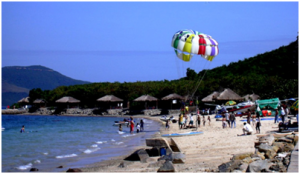
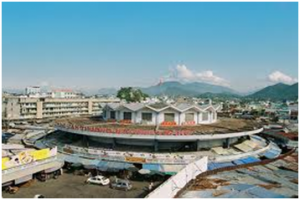
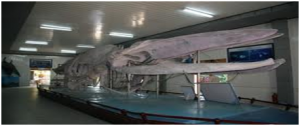
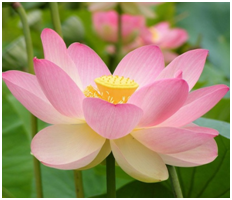
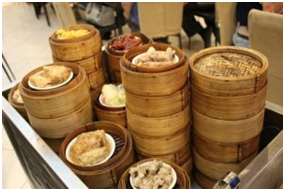
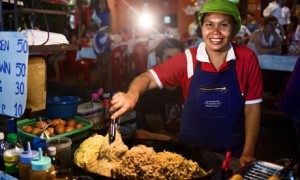
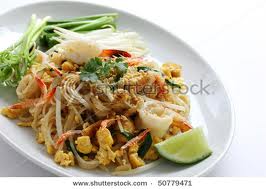
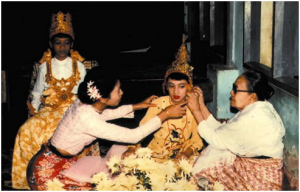
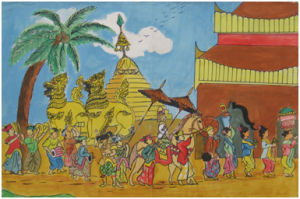
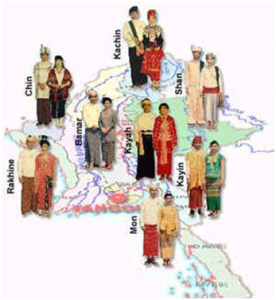
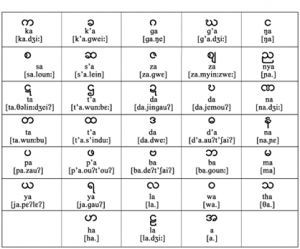
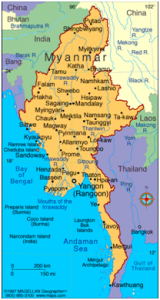



Latest Comments